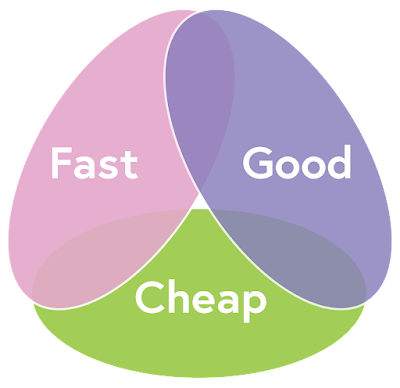Quality, Cost, Time dilemma in Localization
Translation projects have to meet three main requirements as defined in the ‘iron triangle’ invented by Dr. Martin Barnes in the 1970s: quality, time, and cost. One side of the triangle cannot be changed without affecting the other two. According to this theory, translation projects appear to be locked in an impossible equation where the ideal process that is quick, well done, and cheap can never be achieved.
According to this idea, projects can be:
Fast and cheap = this results in poor quality. This is what most clients are asking for, without taking into consideration that reducing the amount of time spent on a project will most probably cause issues.
Fast and high quality = expensive. You will need a bigger team, which will cost you more in terms of human resources and organization.
High quality and cheap = slow. In order to save money, the translation agency will choose beginners and give them extra time, and the project will not be considered a priority.
The question about this dilemma whether we need to settle with the classical approach, that is, to pick only two.
We need to start by defining what do understand by each term. Time and cost are pretty straightforward. Speed refers to the amount of time taken to complete the translation project and cost refers to the budget allocated to the project. But quality is something more complex and is not as easy to define. Quality has historically been highly subjective and non-standardized.
Quality can be about perception or expectation. What the client expects from us that is defined as quality? What measures quality in their eyes?
How much time does it take to complete the project?
How much will cost to complete the project?
How well does it need to be the final product?
Quality sometimes can mean that the project delivery achieved the most optimized way to meet the client’s criteria in terms of cost, turnaround, and quality. When thinking about quality, it’s important to take into consideration what is the purpose of the translation, who will be the target audience and what is the level of exposure the translation will receive.
If we take all aspects into consideration and chose the right approaches, we don’t necessarily need to sacrifice any of these things.


Comments
Post a Comment